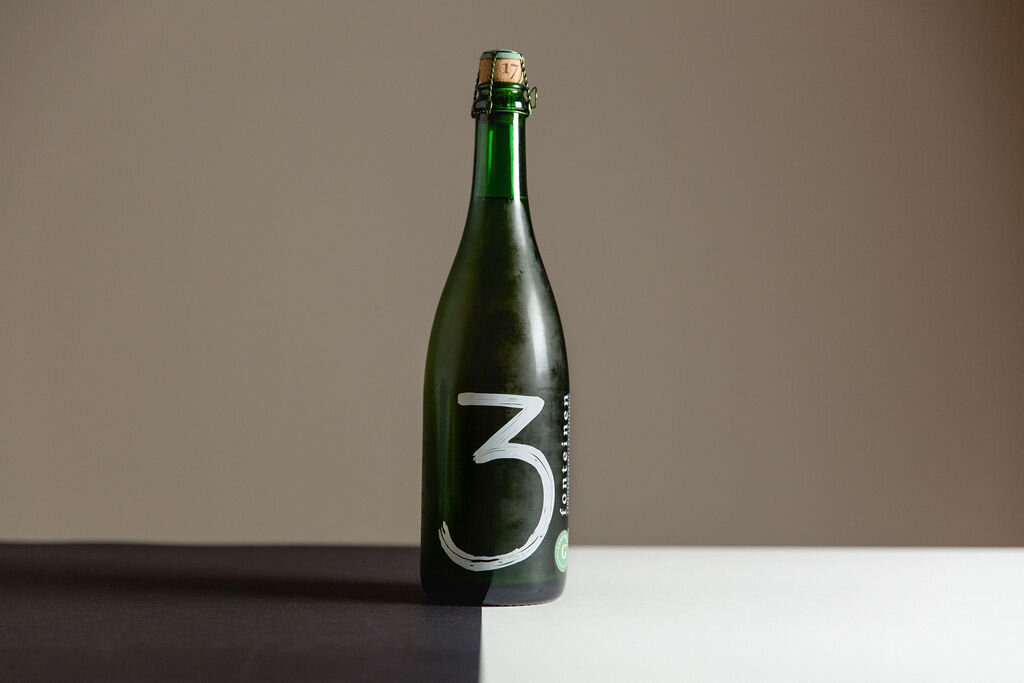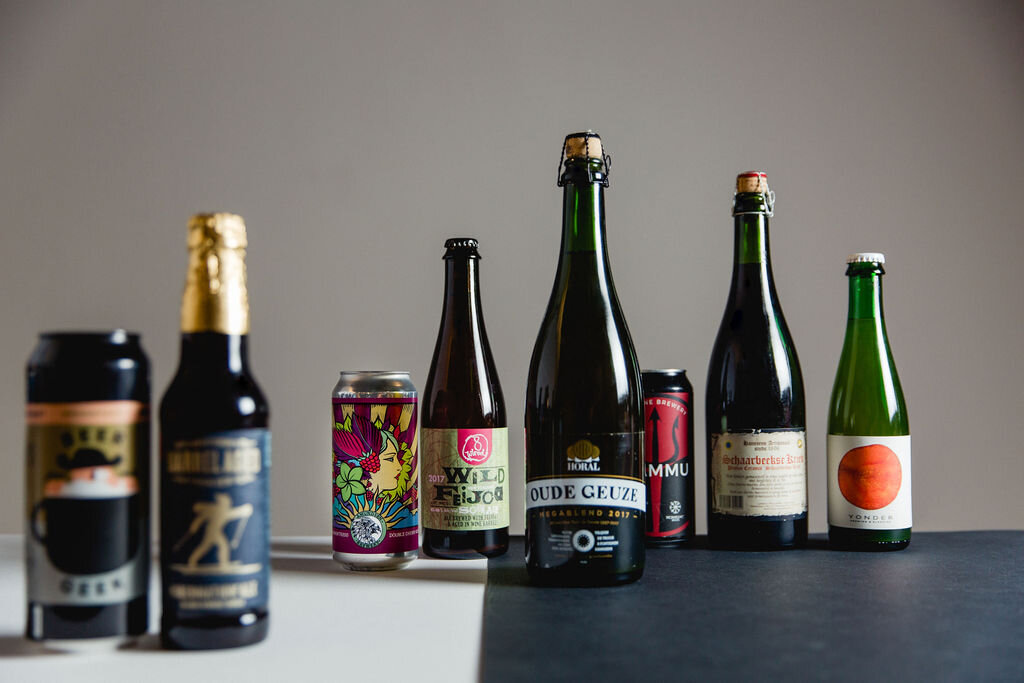Think all fizzy yellow lagers taste the same? Have you ever mixed up a gose and a geuze? Do you really know the difference between a West Coast and New England IPA? We asked beer educator Natalya Watson to explain what sets each of these styles apart. She's also recommended a few beers to taste to help bring these flavours to life, so get your orders in and get ready to spot the difference.
Next in our three-part series, we’re turning our attention to our mixed fermentation styles: Gose vs. Geuze
Mixed fermentation beers – as the name suggests – are fermented by a mix of brewer’s yeast, plus bacteria and/or wild yeast. This means that both of these styles have a tart taste, as the bacteria in the brew produces acidity during fermentation. But that’s really where their similarities end.
Gose (goes-uh) is a German style that’s brewed with added sea salt and coriander seed. It’s fermented by ale yeast plus Lactobacillus bacteria, so it’s got a clean lactic sourness (similar to the tart tang found in Greek yogurt), along with a light herbal freshness from the coriander seed and a soft salinity and slight mouthwatering quality from the sea salt. The acidity here is in balance with the beer’s other flavours, so a gose shouldn’t be sharply sour. (Check out the Berliner wiesse if that’s more your style!). It’s also relatively low in alcohol, too, averaging around 4-5% abv. Brass Castle Dune Bug is a great gose to start with or Mikkeller’s Classic Gose.
Geuze, on the other hand, hails from Belgium and it takes a very unique approach to mixed fermentation. When brewing lambic – the beer that’s aged and blended to produce geuze – brewers don’t actually add any yeast. Instead, using an approach called spontaneous fermentation, the soon-to-be-fermented liquid cools overnight in a large, shallow open vessel, and the microorganisms present nearby naturally settle in and start fermenting. The beer then ages in wooden barrels, which contain even more wild yeast and bacteria. And after years of aging, old beer is blended with young beer to create geuze. This style has many layers of complex flavours, including acidity from the bacteria and fruity and funky flavours (think wet hay, leather and barnyard) from the different yeast within the brew. Not only are these flavours more intense than those in a gose, this style is also a bit stronger, too, typically clocking in around 5-8% abv. To give geuze a go, try the HORAL Oude Gueuze Megablend.
If you’re new to mixed fermentation beers, gose is often a good gateway into these sour styles, before working your way up to the layers of complexity within a geuze.
Natalya Watson
Beer Sommelier & Advanced Cicerone®
Founder of Virtual Beer SchoolAuthor of Beer: Taste the Evolution in 50 Styles
Host of the 'Beer with Nat' podcast
Note from Hop Hideout:
Thanks to Natalya for the second part in this beer styles series for Hop Hideout. We recently completed her Virtual Beer School and it’s rekindled our passion for the wonderful myriad of beers out there. Which then gave us this blog series idea. Beers do come in and out of stock, especially seasonal, specials and vintages of geuze/gueuze (as often limited bottling runs occur). We generally try to keep regular availability across a great range with a specific Belgian focus, however as a wild ale and mixed fermentation beer lover and specialist beer shop we do look to exciting breweries and beers in this field from around the World. We’ve started to collate an aged beer list of these specialities and often make these available for special occasions and drink in at our foodhall home.
Hop Hideout also recommends from our current online shop: Oud Beersel, 3 Fonteinen, Brouwerij Boon, Moa - Sour Grapes (NZ), Trillium, Allagash, Mikkeller x Boon Collabs, De Ranke Mirakel, plus when we have De Cam, Tilquin, Hanssens, Girardin, Lambiek Fabriek, Lindemans, Jester King, The Lost Abbey, Tommie Sjef Wild Ales, Nevel, De Kromme Haring, Wilderness, Little Earth Project, Pastore, Burning Sky and Yonder.
The Toer de Geuze is a bi-annual celebration of breweries and blenderies in the Payottenland and the Senne Valley (started in 1997). Jules had the greatest of times visiting back in 2017 and highly recommends a trip to this celebration. Many of the breweries and blenderies in the Belgian region open their doors to the public and it’s one of the biggest beer events in the world. Unfortunately due to the pandemic this event has not been able to go-ahead this year, however there will be a 2021 at home event 1st to 2nd May 2021, whoop whoop! Find out more on their dedicated website: HERE.
We’ll certainly be popping a few bottles of Oude Geuze this weekend and toasting to future trips to this wonderful country.






